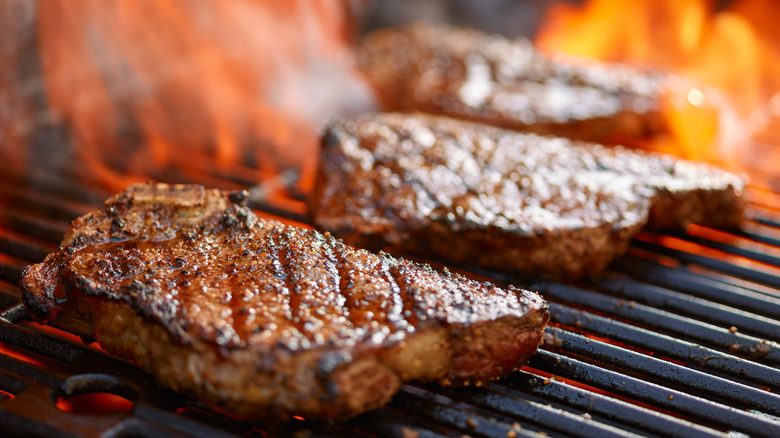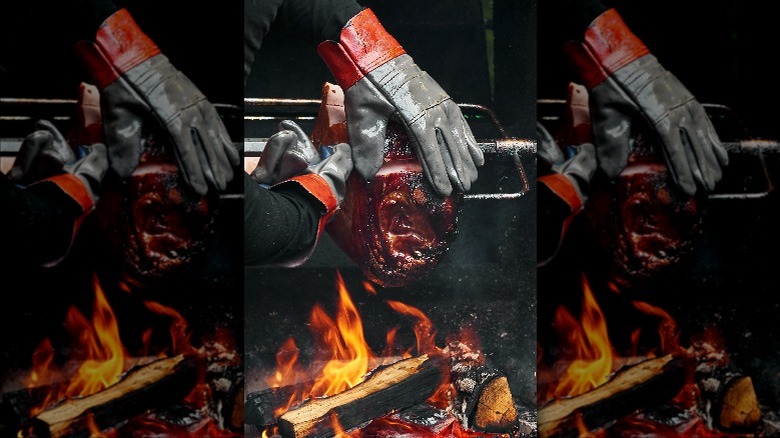The Cheap Kitchen Tool You Need To Handle Hot Steaks Easily
The better you become as a cook, the more you can justify buying fancy gadgets to help you out in the kitchen. But just because you give yourself more wiggle room to purchase specialized equipment, doesn't mean your new tools need to be expensive. And if you're looking for a little more assistance when handling hot steaks, you don't need to break the bank.
All you need is $6.99 to get your hands on some Teenitor heat-resistant gloves (yes, the same ones that are used to prevent curling iron burns). While you can technically use tongs or even a spatula to flip and transfer your steak, heat-resistant gloves give you much more control. Even if you do use basic kitchen tools directly on your meat, when you're firing up the grill, you're exposing your fingers, wrists, and arms to high temperatures. Don't just take it from us — heat-resistant gloves are kitchen gadget staples for celebrity chefs, including Tyler Florence, when it comes to cooking steak in particular. Options like dish towels work in a pinch, but they're still flammable while gloves generally aren't. Plus, these affordable tools can really take the heat, with options like these Grill Armor Gloves that can withstand temperatures of up to 900 degrees Fahrenheit.
How to choose the right heat-resistant gloves
When picking out a pair of heat-resistant gloves, you can choose from a few different types of materials. Silicone is a great option for a few reasons: It's nice and flexible (the whole reason we want to use gloves in the first place), while still providing a solid grip on your steak. Since you're likely working with oil and all those meaty juices, slip resistance is an important quality. Plus, silicone is extremely easy to clean. It's smooth, doesn't absorb the chemicals in cleaning products, and can last for a long time in great condition. Aramid is also an excellent material, as it's flameproof, lightweight, and heat-resistant up to 800 degrees Fahrenheit (although you'll want to check the exact temperature for the gloves you're looking at).
It's important to keep in mind that these types of gloves typically aren't heat-resistant indefinitely. After anywhere from a few seconds to a minute, you may start to feel warmth, although this can also vary based on what you're touching. Start out with gloves that claim to be heat-resistant at the temperature you're cooking your steak at, and monitor from there. To keep them clean longer, layer a nitrile glove over your heat-resistant glove. This extra step shouldn't limit your movement or put a dent in your wallet.

